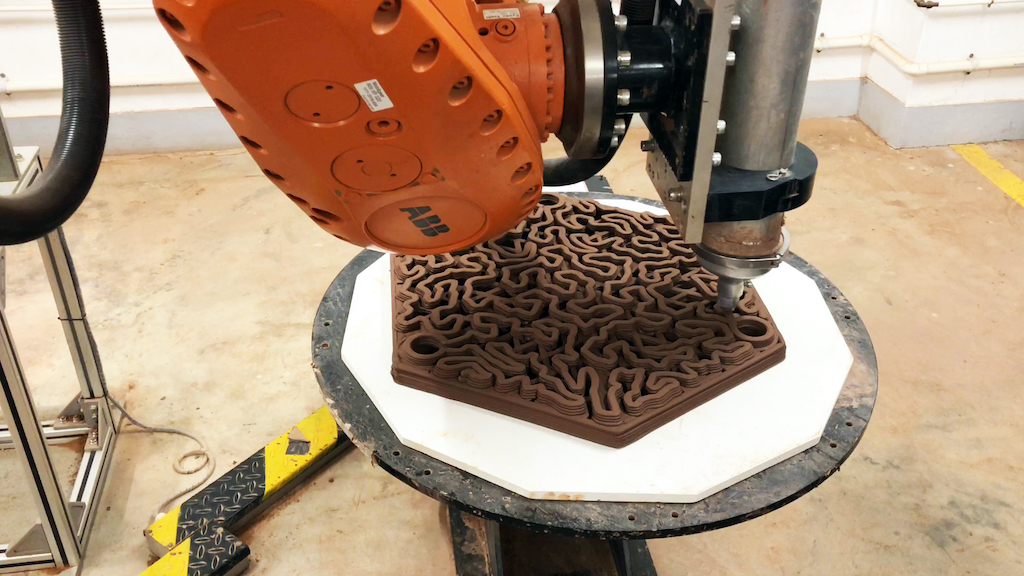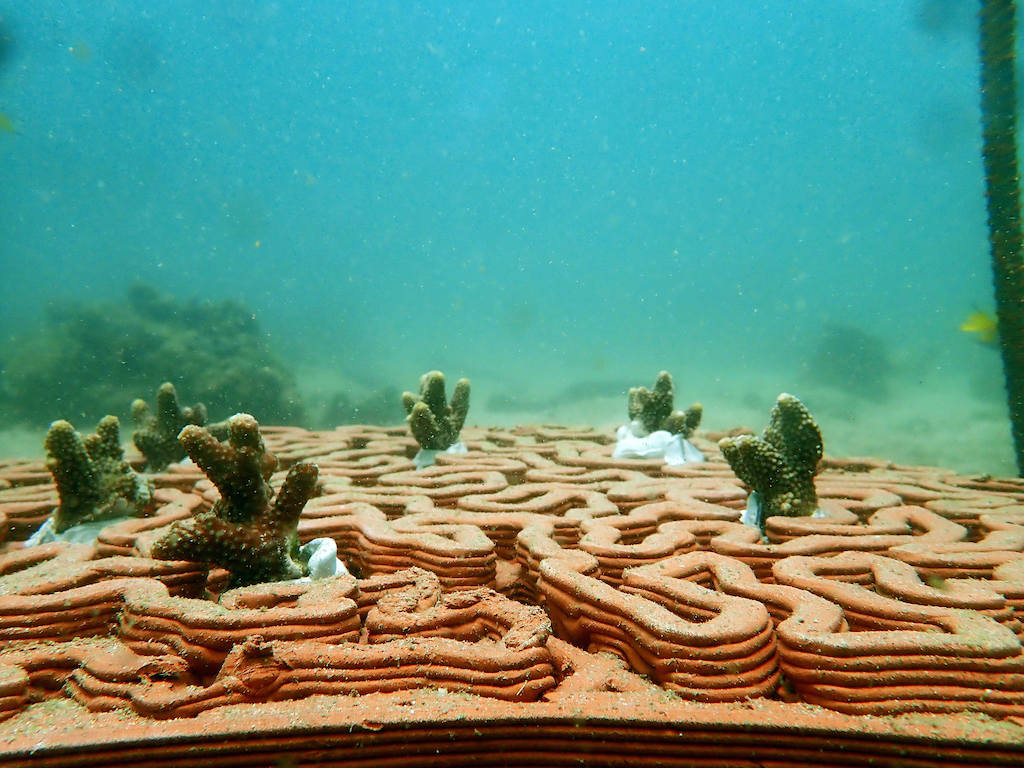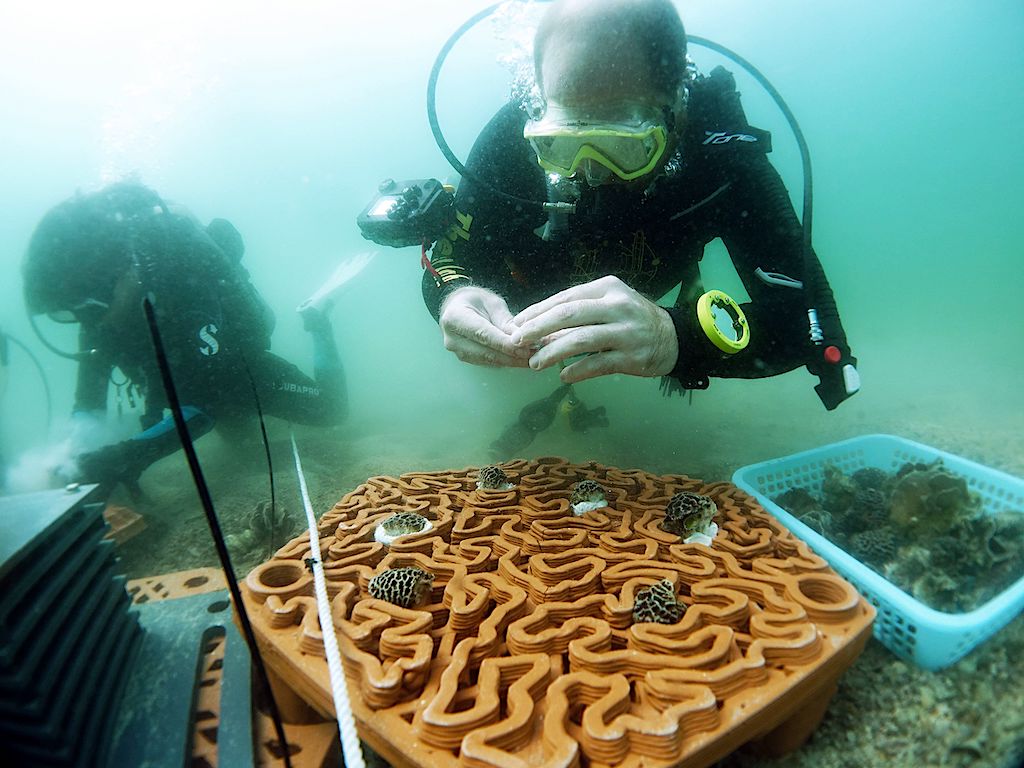3 Mins Read
Architects and marine scientists at the University of Hong Kong (HKU) have co-developed a novel method to help repopulate coral communities. They have designed 3D printed artificial “reef tiles” customised for coral attachment, which will support their survival in Hong Kong’s Hoi Ha Wan Marine Park and help to conserve the city’s marine biodiversity.
In a collaboration between the Architecture and Marine Science departments at the university, researchers jointly created a novel 3D printed reef tile technology. These artificial terracotta reef tiles are tailored for coral attachment and for the monitoring of the coral community in the marine park in Hoi Ha, where more than three-quarters of the city’s reef-building corals are located.
The tiles were 3D printed through a robotic clay printing method and then hardened through firing in high heat in a kiln, a process that has a lighter environmental footprint than the traditional use of concrete and metal. Architects designed the patterns to mimic corals and considered the specific conditions of Hong Kong waters when integrating these aspects.

The 128 pieces of reef tiles cover around 40 square metres in total, and were planted last month at three specific sites within the marine park – Coral Beach, Moon Island and a sheltered bay located close to the WWF Marine Life Centre. The sites targeted three different coral species that were historically common in the region – Acropora, Platygyra and Pavona.
This restoration project was commissioned by the government’s Agriculture, Fisheries and Conservation Department (AFCD).
Researchers say that the artificial reef tiles aid coral restoration because they provide a structurally complex foundation for coral attachment and help to prevent sedimentation, which is one of the primary threats to coral survival. Acting in a similar fashion to anchors, corals that have been dislodged can use the tiles as an opportunity to regrow on their own.

Over the next 18 months, the marine scientists will examine the success of restoration using these tiles and its specific impact on the three species. Researchers will also investigate and monitor the performance of the corals.
Scientists hope that the restoration project will help revive the deterioration of marine biodiversity in Hong Kong. In recent years, the gradual deterioration and destruction of the natural habitat of corals due to human activities such as plastic pollution, and coral bleaching due to rising global temperatures as a result of climate change, has put the survival of the coral community in the region at severe risk.
Protecting coral ecosystems is vital for a multitude of reasons. They help provide a buffer to protect our coastlines from waves, storms, flood and erosion, and also offer spawning and nursery grounds for important fish species. Scientists have previously found that coral reefs support more species per square metre than any other environment on the planet.
All images courtesy of HKU.




